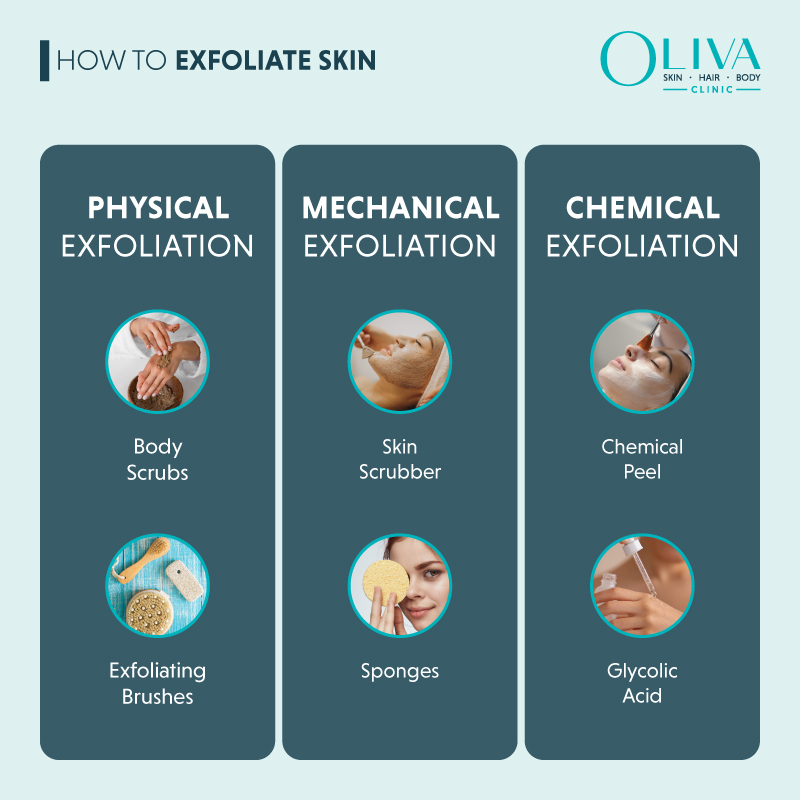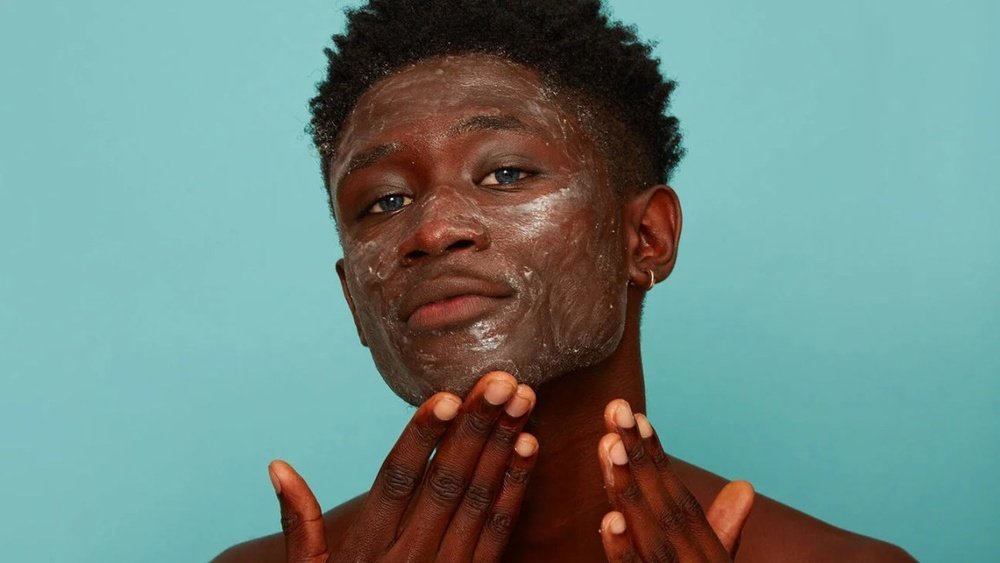If you have sensitive skin, you know how tricky it can be to keep it healthy without causing irritation. Exfoliation can help remove dead skin cells and brighten your complexion, but how often should you do it without harming your delicate skin?
Finding the right balance is key to avoiding redness, dryness, or breakouts. You’ll discover the best exfoliation routine tailored specifically for sensitive skin. You’ll learn simple tips, gentle methods, and how to listen to your skin’s signals so you can glow safely and confidently every day.
Keep reading to unlock the secrets to exfoliating without worry.

Credit: www.northwestpharmacy.com
Frequency For Sensitive Skin
Exfoliating sensitive skin requires a careful balance. Too much exfoliation can cause irritation, redness, and dryness. Too little might not remove dead skin cells effectively. Finding the right frequency helps keep sensitive skin healthy and glowing.
Most people with sensitive skin benefit from exfoliating less often than those with normal or oily skin. This approach reduces the risk of damage and maintains the skin’s natural barrier. Choosing gentle exfoliation methods also supports skin health.
Recommended Exfoliation Frequency
For sensitive skin, exfoliating once or twice a week works best. This frequency allows the skin to renew without causing stress. Over-exfoliating can lead to sensitivity, so it is important to monitor how your skin reacts. Some may find once every two weeks enough.
Signs To Adjust Frequency
Watch for redness, itching, or dryness after exfoliation. These signs suggest your skin needs a break. If irritation appears, reduce exfoliation or switch to a gentler product. Always listen to your skin’s needs and adjust accordingly.
Choosing The Right Exfoliant
Use mild chemical exfoliants like lactic acid or enzyme-based products. Avoid rough scrubs with large particles that can damage sensitive skin. Gentle exfoliants help remove dead skin cells without causing harm. Patch testing new products is essential to prevent reactions.

Credit: www.olivaclinic.com
Choosing Gentle Exfoliants
Choosing gentle exfoliants is key for sensitive skin care. Harsh scrubs or strong acids can cause redness and irritation. Gentle options remove dead skin without damaging the skin barrier. They help keep the skin smooth and fresh while avoiding inflammation.
Many gentle exfoliants use natural ingredients or mild acids. These products work softly and suit delicate skin types. Using the right exfoliant helps maintain skin health and comfort.
What Makes An Exfoliant Gentle?
A gentle exfoliant has fine, smooth particles or mild chemical ingredients. It avoids sharp, rough granules that scratch the skin. The pH is balanced to prevent dryness or stinging. Ingredients like lactic acid or fruit enzymes are common in gentle formulas.
Physical Vs. Chemical Gentle Exfoliants
Physical exfoliants use soft beads or powders to remove dead skin. Examples include oatmeal or rice flour scrubs. Chemical exfoliants use mild acids such as lactic acid or mandelic acid. They dissolve dead cells without rubbing. Sensitive skin often reacts better to chemical exfoliants.
How To Choose The Right Gentle Exfoliant
Check the ingredient list for mild acids or natural exfoliants. Avoid products with alcohol, strong fragrances, or harsh chemicals. Test the product on a small skin area first. Choose exfoliants labeled for sensitive skin or hypoallergenic. Always follow with a soothing moisturizer.
Signs Of Over-exfoliation
Exfoliating sensitive skin requires caution to avoid damage. Over-exfoliation can harm your skin barrier. It leads to irritation and discomfort. Recognizing the signs helps you adjust your routine. Watch for these common symptoms to protect your skin.
Redness And Inflammation
Skin may turn red after exfoliating too often. This redness lasts longer than normal. Inflamed skin feels warm and tender to touch. It signals your skin barrier is damaged. Stop exfoliating if you notice these signs.
Increased Dryness And Flaking
Excess exfoliation strips natural oils from your skin. This causes dryness and rough patches. Flaking skin becomes more visible and uncomfortable. Moisturizers may not fix this issue alone. Cut back on exfoliation to restore moisture.
Sensitivity To Skincare Products
Over-exfoliated skin reacts strongly to creams and serums. You may feel stinging or burning sensations. Even gentle products cause irritation. This happens because your skin barrier is weak. Give your skin time to heal before applying new products.
Breakouts And Blemishes
Too much exfoliation can trigger acne or pimples. Your skin produces more oil to protect itself. Pores get clogged and inflamed easily. This reaction is common with sensitive skin types. Adjust your exfoliation frequency to prevent breakouts.
Safe Exfoliation Techniques
Safe exfoliation techniques protect sensitive skin from irritation and damage. Choosing gentle methods helps maintain skin health while removing dead cells. Sensitive skin needs extra care to avoid redness and discomfort.
Using mild products and soft motions reduces the risk of over-exfoliation. It is important to listen to your skin and adjust your routine accordingly. These techniques support smooth, glowing skin without harm.
Use Gentle Chemical Exfoliants
Chemical exfoliants with mild ingredients like lactic acid or mandelic acid are best. They dissolve dead skin cells softly without scrubbing. Avoid strong acids like glycolic acid in high concentrations. Apply a thin layer and rinse well after a few minutes. Start with once a week and increase if skin tolerates it.
Choose Soft Physical Exfoliants
For physical exfoliation, pick very fine, smooth particles like rice flour or oatmeal. Avoid rough scrubs with large granules that can scratch skin. Use light, circular motions for no more than 30 seconds. Rinse with lukewarm water and pat dry gently. Limit physical exfoliation to once a week.
Moisturize Immediately After Exfoliating
Applying a gentle, fragrance-free moisturizer after exfoliation locks in hydration. It soothes skin and repairs the barrier. Choose products with calming ingredients like aloe vera or ceramides. Moisturizing prevents dryness and irritation that sensitive skin often faces.
Perform Patch Tests Before New Products
Test new exfoliating products on a small skin area first. Wait 24 hours to check for reactions like redness or itching. Patch tests help avoid widespread irritation. Stop using any product that causes discomfort or swelling.
Post-exfoliation Care
Post-exfoliation care is key for sensitive skin. After exfoliating, the skin barrier needs soothing and protection. This prevents irritation and keeps the skin calm.
Using the right products helps the skin heal quickly. Gentle care ensures your skin stays healthy and smooth.
Apply A Gentle Moisturizer
Moisturizing locks in hydration after exfoliation. Choose a fragrance-free, hypoallergenic moisturizer. It calms the skin and reduces dryness. Avoid heavy creams that may clog pores.
Use Sunscreen Daily
Exfoliation makes skin more sensitive to sunlight. Apply a broad-spectrum sunscreen with SPF 30 or higher. Sunscreen protects against UV damage and redness. Reapply every two hours if outdoors.
Avoid Harsh Products
Skip products with alcohol, fragrance, or strong acids right after exfoliating. These can irritate and damage sensitive skin. Stick to mild cleansers and soothing serums for a few days.
Keep Skin Hydrated
Drink plenty of water to support skin hydration from within. Hydrated skin recovers faster after exfoliation. Avoid hot water on your face, as it can dry out skin.

Credit: epicuren.com
Frequently Asked Questions
How Often Should I Exfoliate If I Have Sensitive Skin?
Exfoliate sensitive skin no more than twice weekly. Start with once a week or every other week. Use gentle, mild exfoliants to avoid irritation and dryness. Always moisturize after exfoliating.
Should People With Sensitive Skin Exfoliate?
People with sensitive skin should exfoliate gently using mild chemical exfoliants. Limit exfoliation to once or twice weekly to avoid irritation. Avoid harsh scrubs and always moisturize afterward to protect the skin barrier.
How To Exfoliate Toddler Skin?
Use a gentle natural scrub like rice flour with aloe vera or oatmeal. Massage softly in circles, rinse with lukewarm water, and moisturize immediately. Exfoliate only once a week. Patch-test new products and stop if irritation appears. Keep toddler skin protected and hydrated after exfoliation.
Is It Better To Exfoliate In The Morning Or At Night?
Exfoliate at night to remove dirt and dead skin effectively. Nighttime exfoliation supports skin repair and reduces sun sensitivity.
Conclusion
Exfoliating sensitive skin requires care and patience. Limit exfoliation to once or twice weekly. Use gentle products that soothe, not irritate. Watch your skin’s reaction closely each time. Avoid harsh scrubs or strong chemicals. Moisturize well after every exfoliation session.
Healthy skin needs balance, not over-treatment. Listen to your skin’s needs and adjust accordingly. Consistency and mild care lead to glowing, comfortable skin.
 Skip to content
Skip to content 